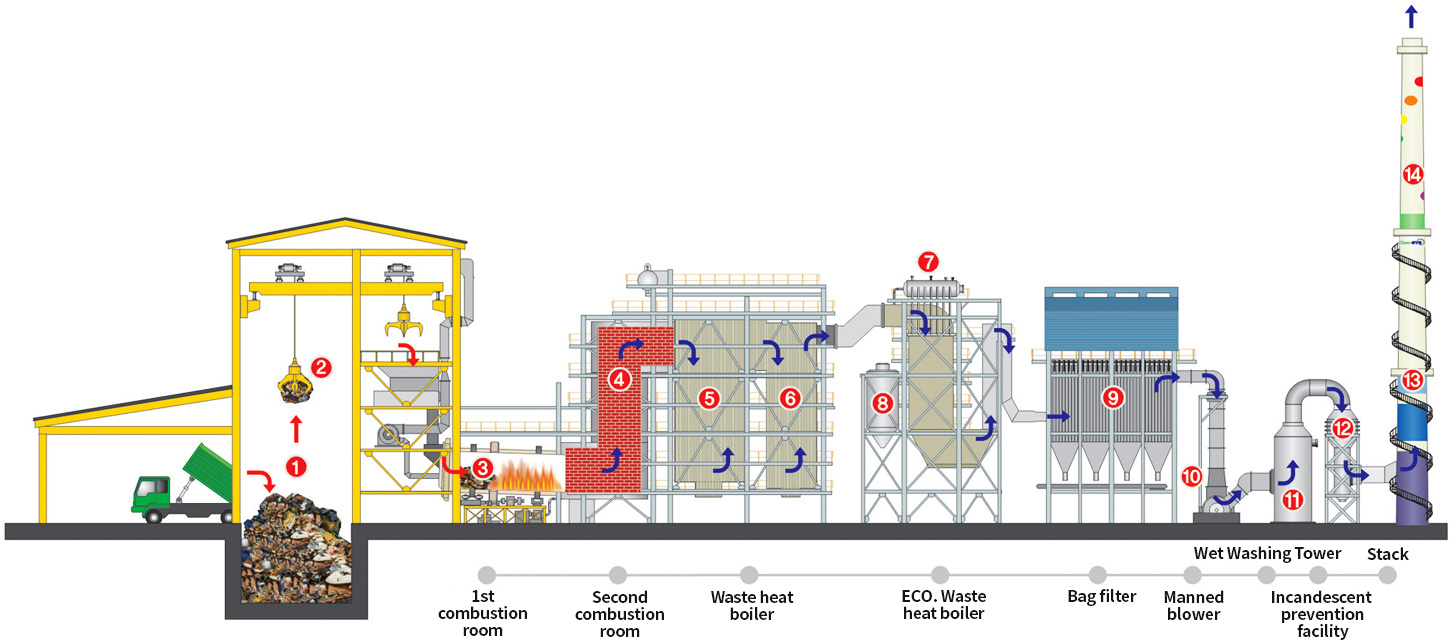Facility status
We will support customers' green management and take the lead in
solving environmental pollution problems by recycling waste resources.
Facility status
We will support customers' green management and take the lead in
solving environmental pollution problems by recycling waste resources.

Carry-in supply facility
Rotary kiln type incineration plant
Waste heat boiler recovery facility
Air pollution prevention equipment
Waste pit
crane
Rotary kiln
Second combustion room
SNCR (catalytic denitrification facility)
Waste heat recovery boiler
ECO. Waste heat boiler
Highly reactive slaked lime and activated carbon injection facility
Filter dust collection facility
Manned blower
Wet cleaning facility
Steam reheater
T.M.S
Stack
Waste disposal
The waste carried by the collection vehicle is weighed, sorted, and stored in the storage pit. This waste is transferred to the input hopper by the overhead crane, and then put into the incinerator for combustion.
Combustion air supply
The air required for incineration of waste is sucked from the waste loading and storage tank to the primary air blower and is fed into the lower part of the incinerator to be used for drying and combustion of waste, and the secondary air blower is also used for complete combustion of unburned gas.
Flue gas flow
The high-temperature combustion gas discharged from the incineration facility is cooled to an appropriate temperature by a waste heat boiler, passes through a bag filter and scrubber, which are air pollution prevention facilities, and is discharged to the atmosphere through a chimney.
Incineration residue treatment
Incineration residues generated after incineration are classified into incineration ash and fly ash, and the incineration ash is discharged through the lower conveyor and temporarily stored in the ash storage bunker, and the fly ash contained in the combustion gas is collected and processed by a filter dust collector. Landfill treatment is carried out in a managed landfill facility accordingly.